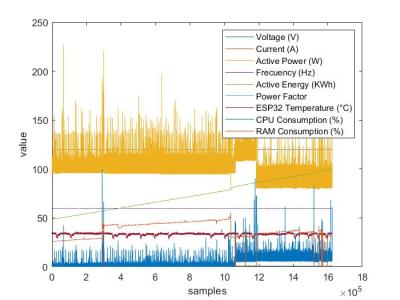KPG: Kirk representation of Power Graphs

- Citation Author(s):
- Submitted by:
- Mohammad Shahraeini
- Last updated:
- DOI:
- 10.21227/7g3s-de09
- Data Format:
- Research Article Link:
- Links:
 202 views
202 views
- Categories:
- Keywords:
Abstract
The Kirk circle is a simple and effective method for representing power graphs and visualizing their topology. In general, nodes (buses) in an electrical network are numbered with neighboring nodes assigned consecutive or closely proximal numbers. This allows for sequential mapping of these nodes in increasing order of their numerical labels to evenly spread points on a Kirk circle. In the Kirk circle, the edge connections (branches) between nodes are indicated by straight lines (chords) between the appropriate points on the circle. The following can be easily identified when visualizing power graphs using the Kirk circle:
(I) Consecutive numbering, which significantly reduces nearly diagonal chords and creates an almost empty space inside the Kirk circle;
(II) Isolated vertices that are not connected to any chord;
(III) Pendant vertices that are only connected to one chord;
(IV) An overview of the number of edges and average degree, which are respectively represented by the total number of chords and the average chords connected to each vertex.
The Kirk circle is a suitable visual method for examining the properties that power graphs possess.
Instructions:
KPG: Visualization of power graph with Kirk circle representation
This function generates a Kirk plot representation of a power graph using the specified adjacency matrix, ZIB locations, and PMU placement. The strategy used in the function is to position the vertices of the graph in a regular n-polygon. The function is a modified version of the “drawCircGraph.m” octave toolbox.
The results of Table II of the paper (A: adjacency matrix, Z: ZIB vector, and X: PMU vector) are also included in AZX folder.
Important note: It is recommended for networks with a size below 100.
Unzip KirkPG.rar. KirkPG.m is the man function. AZX is the folder that contains results of Table II.
INPUTs:
- adj: nxn adjacency matrix
- Z: nx1 ZIB vector
- X: nx1 PMU vector
OUTPUTs:
- Kirk plot of the power graph
Example:
From “ER_SPG: SYNTHETIC POWER GRAPH GENERATION BY ERDOS-RENYI MODEL” dataset and in the AZX.zip, load 57Erdos.mat
In order to repeat Fig. 5.c run:
KirkPG(A,Z,X)









